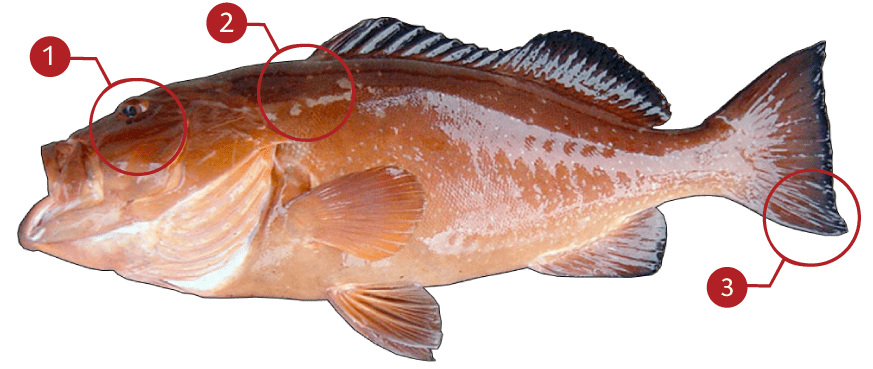RED GROUPER
How to identify a Red Grouper
Color is variable and can change, however the head and body are generally dark brown with a reddish cast, shading to pink or reddish below, with pale poorly defined pale areas and small black spots around the eye. The lining of the mouth varies from scarlet to orange. The soft dorsal, caudal and anal fins are dark with narrow white edges. This species is distinguished from Nassau grouper by its lack of a black saddle spot on the top of the tail just behind the dorsal fin and its straight first dorsal fin.
Where to catch Red Grouper
Red grouper occur in the western Atlantic Ocean from North Carolina to southern Brazil, including the Gulf of Mexico, Caribbean and Bermuda with strays occurring as far north as Massachusetts. Juveniles may be found in shallow water, but adults are mainly found resting in potholes on, or edges close to, rocky flat bottoms in depths up to 1000 ft. Red grouper rarely occur around coral reefs.
IDENTIFICATION

| |
The head and body are generally dark brown with a reddish cast, shading to pink or reddish below, with pale poorly defined pale areas |
| |
Sides have irregular white blotches |
| |
The soft dorsal, caudal and anal fins are dark with narrow white edges |
TARGET AREAS
|
|
Acknowledgements: We thank TAKEMEFISHING.org (www.takemefishing.org), Wisconsin Department of Natural Resources, Indiana Department of Natural Resources for their contributions to these FISH FACTS.

